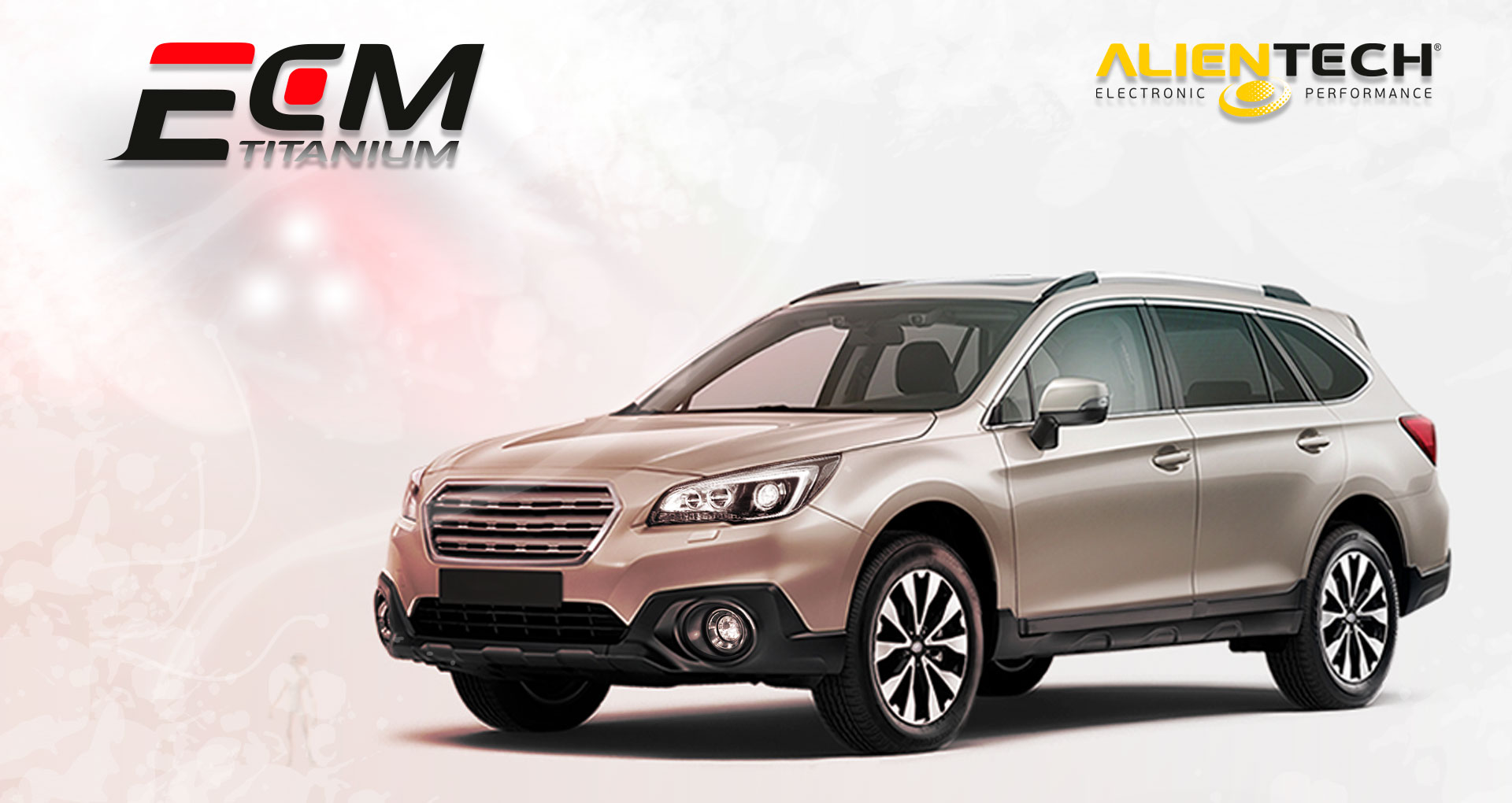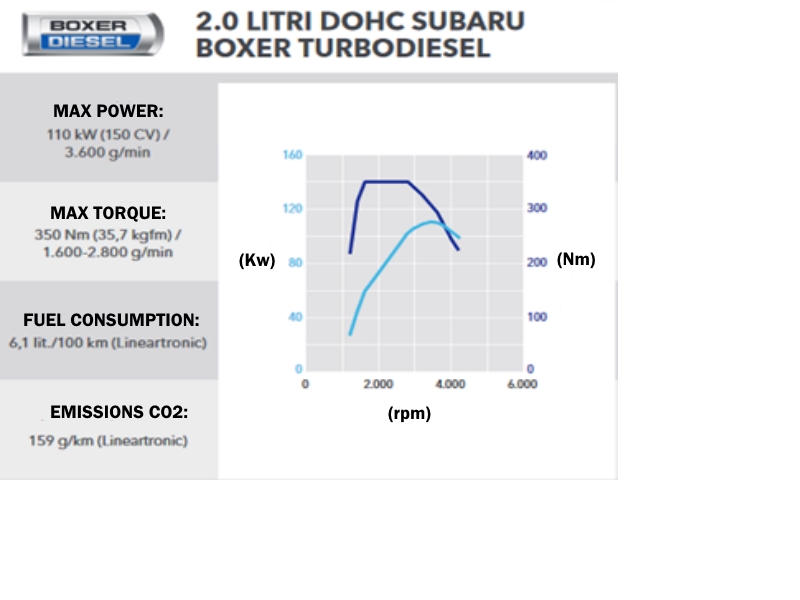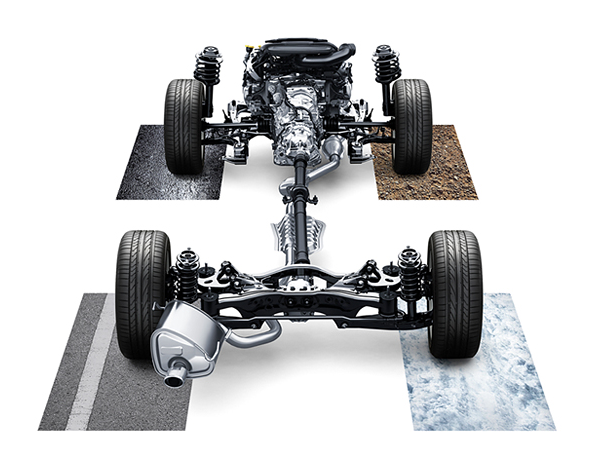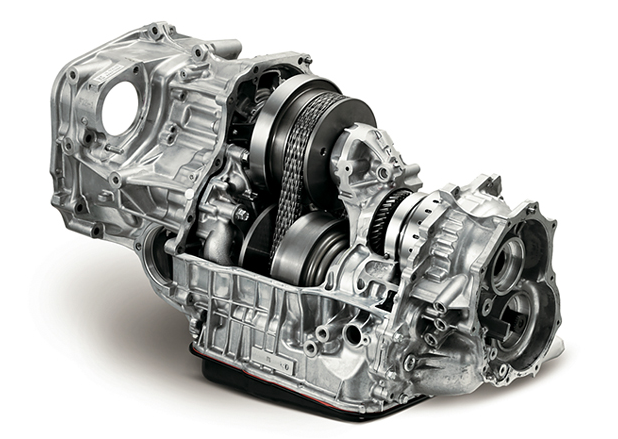The Outback runs very well either in the city traffic or on the rough roads of the countryside, in full comfort. This also because of the big size of the trunk, larger than in the preceding versions. Petrol and diesel are the available engines that push the Outback to its best, using the strong Boxer propeller with the all-wheel drive typical of all the Subaru. 2.0D version provides 150PS at 3600rpm and gains 350Nm between 1600rpm and 2800rpm.
You can find the same engine of the Japanese manufacturer on other models too, like Forester, Legacy, XV and Impreza.
Now, let’s take a closer look to the BOXER engine, the flagship of Subaru.

In the past, many car factories used the Boxer engine, like Alfa Romeo, BMW, VW, Citroen, Panahard, Chevrolet, Lancia, Tatra and Steyr-Puch. The first Porsche 4 cylinder Boxer engine was air-cooled and was born in 1948 (Porsche 356). It was directly inspired by the Volkswagen engine used by the Beetle and during the war, by the military vehicle Kubelwagen.
For Subaru as well, the Boxer engine, above all because of all the success in the rally championships during the 90’s and 2000, has become a winning trademark so strong that the manufacturer decided to introduce a Diesel version too, on Legacy and Outback. The “diesel project” started back to 1999 and in 2004 the first prototypes 1.3 and 1.7 are running on bench. The final goal is a 2 liter engine that, if compared to the petrol version, has a smaller bore (with a more compact combustion chamber) and a longer stroke with the same engine displacement. They chose the square size of 86 x 86 mm.
Let’s see the pros and cons of this engine:
First of all, its flat design reduces its height giving many advantages to the aerodynamics in case of front engine (with a lowered hood). Furthermore the center mass of the vehicle results lowered too because the weight of the engine is lowered as well. Even the length of the engine itself is reduced if compared to an in-line engine with the same displacement, this allows to have more space in the cockpit reducing also the difference between front and rear.
Moreover the Boxer settings allows a shorter and more compact crankshaft (since the distance between the front pistons is inferior); so the crankshaft results more rigid with less possibility of torsion or bending. Another important pro is the almost complete absence of vibrations caused by the alternating forces of inertia of the first and second lines that result totally balanced. That’s because of the forces generated by the alternate movement of the opposite pistons that cancel each other out. Also the couples of the first line are balanced, while in the standard 4 cylinder engine they are not.
In the 6 cylinder Boxer engine all the forces and couples are balanced. This means that in the Boxer engines you do not need any countershaft to set again a perfect balance, avoiding unnecessary weight and simplifying the mechanical procedures. It’s important to highlight how this perfect balance can be found only in the Boxer engines when the pistons move in opposite direction thanks to the related rod linked to different pins, staggered of 180°.
In the case that the heads of the rod of the next piston are lined in the same crankpin ( like on the Ferrari F1 3 liters V12 engine at 180° from the ’70s ), you cannot talk of Boxer engine because the pistons move all in the same direction. More exactly you should refer to them as 180° V engines. Let’s see now the negative aspects of the Boxer flat engines. First, the cumbersome trasversal size, the more complicate mechanical structure if compared to the in-line engine, because of the two separated banks (like in the V engines) at 180° one to the other. So, with the same number of cylinders, some of the timing gears must be doubled ( (camshats, belts, chains,…). This means a rise of the costs that somehow must be compensated.
The DIESEL BOXER is the first engine designed for automotive applications. It’s a 1998 cc, 4 cylinders Common Rail Direct Injection Turbocharged engine with single block and cylinder heads in light alloy. It produces 150 HP at 3600 rpm with a maximum torque of 350 Nm at 1600-2800 rpm.
The pistons, with reduced skirt, have on their sides an antifriction coating in a graphitic material and an internal circular oil pipe to cool the upper part. The short connection rods have the junction plane of the caps inclined to facilitate the assembly and improve the lubrication. The compact and particularly well-built crankshaft, mounted on 5 bearings, is less than 35 cm long thanks to its thinner parts.
The timing is controlled by 4 parallel valves per cylinder driven, through rocker arms with central rollers, by 4 overhead camshafts (2 per bank) actioned by two single chains (1 per bank) equipped with self-adjusting chain tensioners. The common rail direct injection system operates at a pressure of 2000 bar, the turbocharger has a variable-geometry (VGT).
Another peculiarity is the Symmetrical AWD system
Symmetrical AWD, comprising of a longitudinally mounted Horizontally-Opposed SUBARU BOXER engine and a symmetrically designed 4WD drivetrain, is the system that Subaru has focused on for the best stability, safety and on-road performance. This unique drivetrain has been at the core of Subaru development ever since the world’s first 4WD passenger car was released four decades ago. The entire drive system, from the longitudinally mounted Horizontally-Opposed Engine to the rear differential, is mounted in a straight, symmetrical line. The characteristics of the longitudinally mounted Horizontally-Opposed Engine, which can be positioned low in the vehicle, have been maximised to bring the centre of gravity as low as possible, and towards the centre of the vehicle itself. The extreme performance that this superior weight balance provides works with the outstanding traction of 4WD to limit the chassis rolling and pitching, which occur driving around corners or braking, for maximum stability at all times. The resulting chassis rocks less and ride comfort is increased, making the journey enjoyable for all passengers.
In FWD and RWD drivetrains that do not power all four wheels in the way that AWD does, excessive loads can be applied to the driving wheels. Lateral forces then come into play when cornering, and a lack of traction can cause the vehicle to abruptly change direction towards the outer side of the driving wheels. On the other hand, AWD systems distribute power between all four tyres in a balanced manner. This creates the most neutral handling possible, as there is no loss of grip in the direction that the vehicle is travelling, even if the vehicle is cornering. If one wheel starts to lose traction on slippery road surfaces, the other three driving wheels can provide the required traction to compensate. Compared to FWD and RWD systems, there is a much greater level of traction, and therefore safety. At the same power levels, acceleration is also so much better when there are four drive wheels rather than two.
Complementing this is the Symmetrical AWD, allowing the entire system to be mounted lower in the vehicle. A low centre of gravity is directly related to more stable vehicle behaviour when cornering. These Symmetrical AWD characteristics ensure more stable driving under a range of different driving conditions, letting the driver drive with greater peace of mind. This unique layout is simply miles ahead of others in terms of on-road stability, whether that be on local streets or the expressway, or varying levels of rough terrain. “The driver no longer needs to worry too much about driving, and does not become tired so easily”. This is also an important safety aspect for preventing accidents before they happen.
Then, we have the LINEARTRONIC transmission
Designed to get the most out of SUBARU BOXER engine and Symmetrical AWD, the efficient Lineartronic Continuously Variable Transmission keeps the engine in its ideal power range to give the new Outback its class-leading fuel consumption at 6.1 lit./100km (Diesel Lineartronic).
New shift controls keep the ride light, smooth and responsive. Lineartronic in 2.0D also handles the higher-torque output with less mechanical noise for a smoother, quieter drive. The shift controls have a new stepped variable control that stays in tune with changes in vehicle speed and engine speed, allowing the driver to feel shift points when accelerating to form a strong and comfortable connection between car and driver.
HOW DO YOU READ THE OBD AND WHERE IT IS LOCATED?
With the KESSv2 tool you can read this ECU directly connecting it to the OBD door, using family 553 with the standard OBDII cable (144300KCAN).










